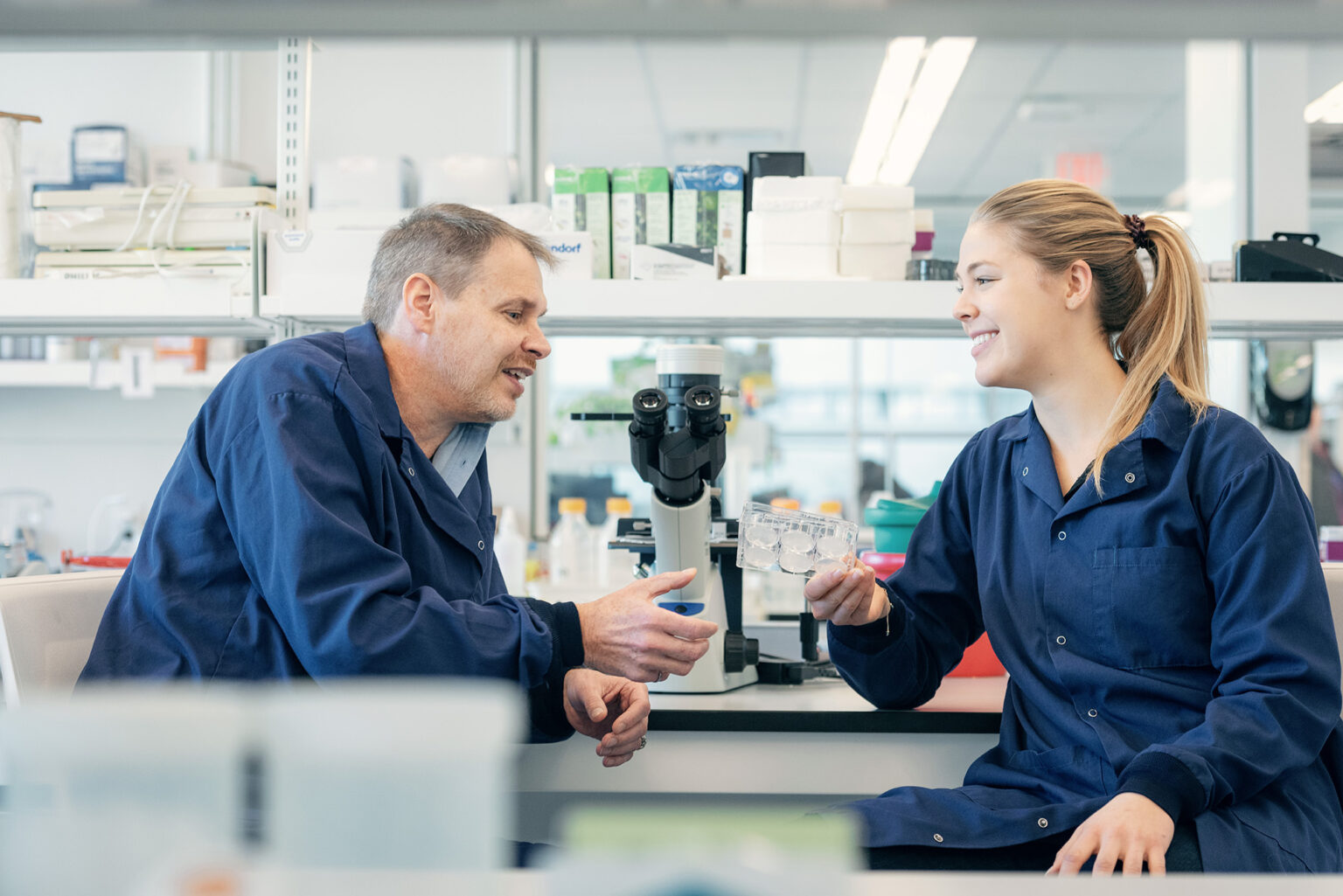Newsroom
The Science Behind Sexual Health: Research from the Zandstra lab
World Sexual Health Day is a national day that raises awareness, reduces stigma, and improves access to essential sexual health resources. This year’s theme is “Consent” – a crucial and fundamental element of any healthy sexual encounter.
To acknowledge this day, researchers from the Faculty of Science are sharing their scientific research in relation to sexual health, how scientific knowledge plays an important role in increasing informed consent, and how consent is honoured in collecting research.

PhD candidiate Laura Stankiewicz – Zandstra and Rossi labs
In this Q&A from Dr. Peter Zandstra’s and Dr. Fabio Rossi’s lab at the Michael Smith Laboratories and School of Biomedical Engineering, PhD Candidate Laura Stankiewicz shares her research on important discoveries around sex differences regarding the development of T cells in the thymus and the potential implications for the effectiveness of drugs and therapies.
Outline your research project:
I’m interested in learning how T cells, the cells that act as the top generals of the immune system, develop in early childhood. T cells develop in an organ called the thymus, where they learn to detect and distinguish between healthy cells in our body and diseased cells, such as infected cells or cancer cells. In my research, I use new imaging and sequencing technologies to study how T cells in the human thymus are trained to recognize healthy and diseased cells and how this training differs between sexes. Interestingly, we’ve found that there are differences in the early training environment of the thymus that could change how T cells develop between sexes. Understanding these sex differences in the early training environment of T cells is important because T cells circulate in our body for decades, and problems in T cell training can lead to cells that are over reactive, increasing the risk of autoimmune disease. They can also become under-active, increasing the risk of cancer and infections.
What do you hope to achieve with this research in the future?
This research changes our understanding of when in life sex differences begin to affect our immune system, disease susceptibility and progression. Our research suggests that sex differences are present pre-puberty and argues that models in immunology should include sex as an important variable when testing drugs and studying diseases.
What inspired you to research this specific topic?
I was surprised that, to my knowledge, no one has looked for sex differences in early human T cell development. Most studies focus on sex differences post-puberty, assuming that differences in hormone levels drive sex differences in other biological developments. However, there are emerging insights that inherent sex differences in cell function are present early in life in other tissues.
How is your research connect to sexual wellbeing?
Immunity is at the core of almost all human diseases. Understanding how immune cells react differently between sexes should inform how we think about patient risk and treatment, as well as drug development and testing.
 What challenges do you face working with sex differences in research?
What challenges do you face working with sex differences in research?
It’s exciting to see the biomedical research field moving towards understanding the importance of including sex as a variable in research. However, I find that:
- The community is still skeptical that sex differences could contribute to large differences in patient immune responses aside from patient-to-patient variability.
- We still don’t have good model systems to test human sex differences in a way that would let us develop sex-specific drug regimens.
How does your work help de-stigmatize the importance of sexual health or combat issues with sex differences in health care and research?
We need to think about and evaluate patient risk critically and include sex as an important risk determinant. Historically, pre-clinical research often excludes female mice when testing drugs due to the difficulty of controlling for female hormone cycles as a variable. We are now beginning to understand the impact excluding sex as a variable can have on drug testing and female health outcomes.

Left to right: Dr. Peter Zandstra and Laura Stankiewicz
“Consent” is the theme for this year’s World Sexual Health Day. How might “consent” play a role in your research activities or the delivery of health care as a result of these activities?
This research underlies the consequence of not including diverse populations in the development of therapies and diagnostics. It suggests an important new angle to informed consent. There is an implied trust from patients when using a therapy that standards of due diligence were met in creation and testing. If we know that there are sex differences that can affect efficacy of a therapy, can we ask for consent without ensuring that sex differences are considered in development? If we don’t take into account sex differences in our research, clinical development, and practice, we run the risk of technologies being ineffective, or even harmful, for many people.
Quick links:
- Read more about the sexual health research going on at UBC’s Faculty of Science
- Learn more about the Zandstra Lab
- Learn more about World Sexual Health Day